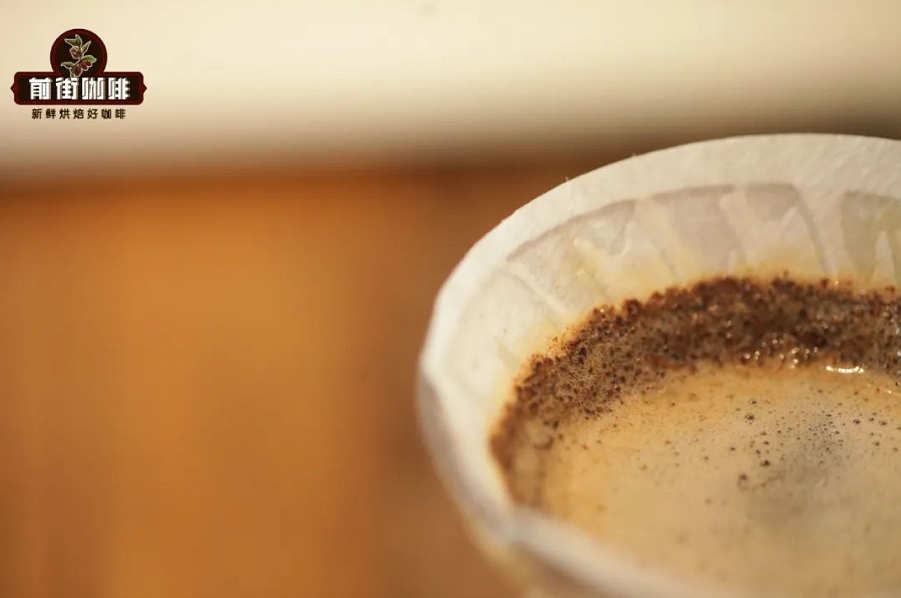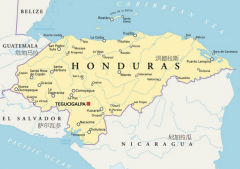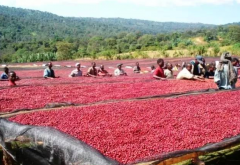Basic knowledge of barista basic knowledge of hand-brewing coffee brewing skills coffee bean grindability water temperature ratio parameters
[dissolution] and [diffusion] are the principles of hand-brewed coffee
So what does dissolution and diffusion mean?
[dissolution] refers to the chemical reaction of coffee beans after roasting to produce coffee ingredients that give off the aroma and taste of coffee, with a variety of chemical macromolecules and small chemical molecules, which are the aroma, sweetness, sour taste, bitterness and so on. In order to extract these coffee ingredients, you need to grind the coffee into powder, then slowly inject water to dissolve the ingredients in the coffee.
[diffusion] means that in daily life, we know that in order to dissolve better, we need to grind the powder more finely, but in hand-brewing coffee, if we grind the coffee powder very fine, it will block the filter paper. So you have to grind the coffee powder to the size of fine granulated sugar (medium to fine grinding), but in this way it will dissolve unevenly (coffee substances have small molecules that are easy to dissolve and macromolecules that are not easy to dissolve). It needs the help of "steaming", "stirring" and "shaking the sharing pot" in the extraction (there will be a concentration difference in the process of dissolving by water injection. Shake the sharing pot after extraction It's for uniform coffee concentration.

What is the flavor of a cup of hand-made coffee in the process of extraction?
You can interpret it this way and divide it into three paragraphs:
The first stage is the aromatic substances and acids that are easily extracted (floral and fruity).
The second paragraph is the sweetness and caramelization of coffee.
The third paragraph is the bitter and astringent taste of coffee, and all we have to do is to extract the flavor of coffee with water.
There are also three cases in the process of extraction: gold cup extraction, insufficient extraction and excessive extraction.

Gold cup extraction
If you play with coffee, you have to mention the Golden Cup Theory. Many friends who play hand Chong know that the extraction rate of the gold cup is 18% Mur22%, but what kind of data is it? A lot of people don't quite understand.
The Golden Cup Theory (Gold Cup) holds that "good coffee" must conform to both.
1. The extraction rate is between 18% and 22%.
two。 The coffee concentration is in the range of 1.2% to 1.45%.
Gold cup extraction is considered to fall within the ideal extraction range when the concentration of your brewed coffee is between TDS 1.2 and 1.4, and the extraction rate is also up to 18%-22%. What has not yet reached this extraction range is what we call insufficient extraction, while exceeding it means excessive extraction.
Coffee extraction rate: indicates that the weight loss of coffee beans in the brewing process accounts for the proportion of coffee beans used.
Coffee concentration: the proportion of the extracted coffee substance to the total coffee liquid.
Insufficient extraction
Insufficient extraction means that there are not enough substances brought out in the extraction process, and there are still extractable substances in the coffee powder. The coffee is tasted with acidity, sweetness, salty feeling, thin taste and short aftertaste.
Excessive extraction
"excessive extraction" means that coffee powder has been in contact with water for too long, extracting too many substances that we do not want, and coffee has an obvious bitter, mixed and astringent taste.
Important Notice :
前街咖啡 FrontStreet Coffee has moved to new addredd:
FrontStreet Coffee Address: 315,Donghua East Road,GuangZhou
Tel:020 38364473
- Prev

Honduran coffee beans: what are the flavor characteristics of sherry barrel coffee beans and litchi orchid coffee beans?
What is the difference between Shirley barrel and Litchi orchid flavor? First of all, these two coffee beans are coffee beans from Honduras. Litchi orchid and sherry buckets are both from Masaguara, a municipality in the province of Intibuc in Honduras, located in the south of the JessdeOtoro Valley, surrounded by mountains and hills, mainly dedicated to coffee cultivation.
- Next

What are the ways to handle coffee beans? Sun treatment and water washing treatment are introduced and compared in detail.
There are three traditional coffee bean treatment methods: sun treatment, water washing treatment and honey treatment. Honey treatment is between sun and water washing, whether it is the treatment method or taste, so today let's talk about the biggest difference between sun exposure and water washing. It is very important for a delicious coffee bean to deal with this piece of raw bean. Whether a coffee bean is good or not accounts for 1/3 of the planting environment.
Related
- Beginners will see the "Coffee pull flower" guide!
- What is the difference between ice blog purified milk and ordinary milk coffee?
- Why is the Philippines the largest producer of crops in Liberia?
- For coffee extraction, should the fine powder be retained?
- How does extracted espresso fill pressed powder? How much strength does it take to press the powder?
- How to make jasmine cold extract coffee? Is the jasmine + latte good?
- Will this little toy really make the coffee taste better? How does Lily Drip affect coffee extraction?
- Will the action of slapping the filter cup also affect coffee extraction?
- What's the difference between powder-to-water ratio and powder-to-liquid ratio?
- What is the Ethiopian local species? What does it have to do with Heirloom native species?

